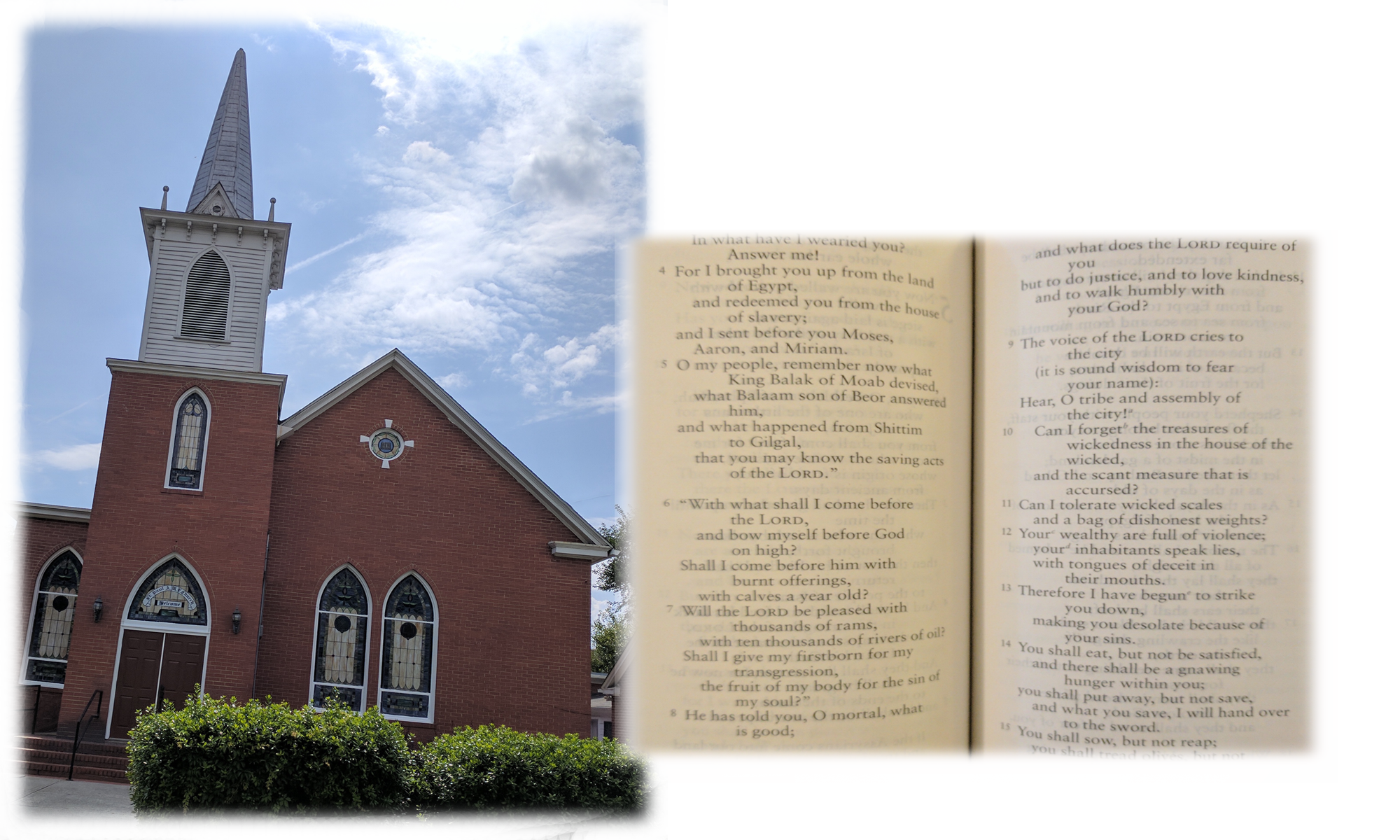Rev. Jim Wallis and Rev. Dr. William J. Barber discuss the intersection of race, politics, and the gospel in this short film from Fusion Films.
William Barber, the Seymour Symposium, and Prophetic Ministry

Tomorrow morning, Sunday, December 3 will be our last class for the Fall 2017 season.
We will watch two short video clips, a little more than 7 minutes each. They both show Dr. Barber, the architect of the Forward Together Moral Movement. In the first he addresses the history of voting rights in America. The second clip shows him speaking at Binkley’s Seymour Symposium.
The website StoryOfAmerica.org has called this second clip “Rev. Barber’s most compelling 7 minutes so far.”
We will discuss the role that prophetic ministry might play at Binkley in the years to come.
You can see the News and Observer‘s article about our most recent Seymour Symposium here.
Selma: The Bridge to the Ballot (Part Two)

On Sunday, November 12, we will continue viewing the documentary, “Selma: The Bridge to the Ballot”. We saw the first twelve minutes last Sunday, and used the rest of the class time to discuss what we had seen and talk about the involvement of some of our classmates in the Civil Rights struggles of the 1960s.
Tomorrow we will see how Martin Luther King, Jr. became involved in the struggle for voting rights in Selma. Here are a few questions we will consider as we watch the documentary:
- What brought Dr. King to Selma?
- Demonstrators marched to the courthouse every day during the early part of the voting rights campaign. Why did they do that?
- Teachers from the local black school joined the protests. Why was this significant, and what risks did they take?
- How did the death of Jimmie Lee Jackson affect the campaign?
- What happened in Selma after Bloody Sunday made national news?
- What evidence did you notice in the documentary of the role faith played in the developing campaign in Selma?
- What does that evidence show about the faith of the participants?
Selma: The Bridge to the Ballot

On Sunday, November 5, 2017 we will begin viewing the documentary, “Selma: The Bridge to the Ballot”. We will watch the first twelve minutes, then have time for discussion and reflection.
The documentary is produced by Teaching Tolerance, an Alabama based organization that produces educational materials supporting respect for diversity.
As we view this first segment of the documentary we will consider the connection between churches and the early days of the civil rights struggle against Jim Crow. The documentary does not focus on this. We will need to pick up on clues in the documentary that suggest the roll churches played.
I look forward to seeing you at Binkley.
Pathos and Jesus of Nazareth

On Sunday, October 15, 2017 we will discuss the meaning of pathos as applied to the prophetic tradition and specifically to Jesus of Nazareth. While the category “prophet” is clearly not the only one we could apply to Jesus, it is one of several ways that he is presented in the New Testament. We will look at this element of the prophetic tradition and what this implies about Jesus’ significance for the early Christian communities that produced the gospels and letters of the New Testament.
You can see the presentation that I will use here.
Pathos and the Prophet Jeremiah

On October 1, 2017 we will examine the role of pathos in the work of the prophets. Since Jeremiah is the clearest example of this element found in all of the prophets, we will focus our discussion on his ministry.
Jeremiah did not succeed in convincing the leadership of his day to change course and avoid the disaster that lay ahead. Can we be more successful in our own time, or are we too headed down a path that will inevitably lead to disaster?
You can see the presentation I will use here.
The Alternative Community of Moses

On Sunday, September 17, we will discuss the Alternative Community of Moses, an idea presented by Brueggemann for understanding the impact of Moses. We will discuss the first 18 chapters of the book of Exodus in very summarized form and examine what Brueggemann is claiming about Moses’ significance as a prophet.
The presentation that I will be using can be found here.
What does it mean to call someone a prophet?

Our class this coming Sunday (September 10, 2017) will focus on two things.
- First we will do some housekeeping, getting contact information, giving out information about the class and about online resources to help with our study.
- Second, we will begin to discuss the question of what it means to call someone a prophet. If we refer to someone like Dr. Martin Luther King, Jr. as a prophet, do we mean the same thing we mean by calling Isaiah a prophet? If not, what is different? Is so, what are we asserting about Dr. King? This discussion will include some examples from the biblical prophets to give us context.
I look forward to a great first class and to seeing you there.
For directions, click here.
Added September 16:
I’ve uploaded the presentation I used to teach this class. You can view it here.

You must be logged in to post a comment.